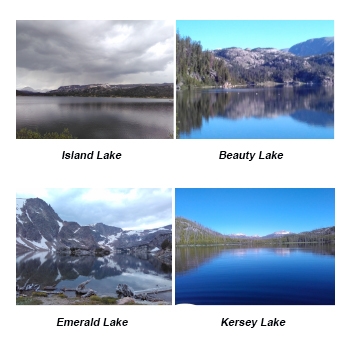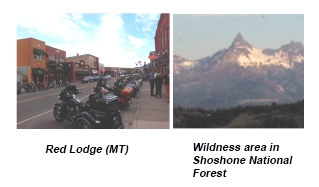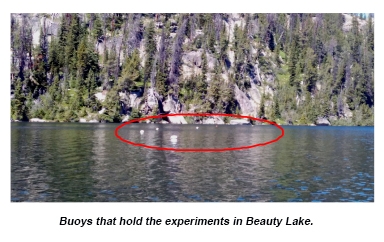
Beartooth Mountains 2017
Beartooth Mountains 2017
UNDERSTANDING AULACOSEIRA ECOLOGY TO REALIZE THE LENTIC RESPONSE TO CLIMATE CHANGE
Journey to Beartooth Mountains, south central Montana – northwest Wyoming
July 5 – August 2, 2017
Field Team: Edna Pedraza Garzón and Benjamin Burpee
Background
Alpine lakes are considered ideal sensors of climate due to the distinctive and accurate response of their aquatic communities to the fluctuation of the environmental conditions (Catalan 2006). However, the interpretation of the environmental changes and the conditions that induce species dynamics can be misunderstood if the ecological responses of the species are not accurately defined (Holt and Miller, 2010).
Certain species of the genus Aulacoseira (A. lirata, A. distans, A. perglabra) are used for bioindication of environmental changes in lakes. Nonetheless, the responses of those species to environmental changes are complex, showing varied environmental preferences (oligotrophic conditions, acidic environments, deep lakes, turbulent conditions, found in sediments) (Buczkó et al., 2010; Rühland et al., 2003; Sheibley et al., 2014). That variation of preferences veils the drivers of change for Aulacoseira, and the effect of environmental changes in lakes.
Understanding the ecology of those species is essential to predict the response of the communities under future dynamic climatic conditions. That was the main reason that propelled the journey to the Rocky Mountains, where the presence of Aulacoseira species has been reported(Arnett et al., 2012; Saros et al., 2003).
The Journey
The travel to study Aulacosira species started on July 5 and took us 3 days to arrive to Red Lodge (MT), the closest population to the Beartooth Mountains lakes. From that city we moved to the Beartooth Lake campground in the Shoshone National Forest (WY), that later became the area from where we organize the field work and sampling schedule.
Since June 9th and for 23 days we hike to Emerald, Beauty, Beartooth, Island and Kersey Lake to get samples that will let to understand the ecological preferences of Aulacoseira species.
To comprehend the conditions that favor population growth of Aulacoseira spp, microcosms experiments were done under different conditions of light, temperature and nutrients.
By the end of the month and with a pile of data and samples we started our trip back home, returning to Maine on August 5th.
Acknowledgements
All field work was made possible by the Churchill Exploration Fund. The support of Dan and Betty Churchill was essential for the fulfillment of the research goals. Thank you for allowing the advance of the aquatic ecology.
- Beginning of Journey
- Sample Sites
References
Arnett, H.A., Saros, J.E., and Mast, M.A. (2012). A caveat regarding diatom- inferred nitrogen concentrations in oligotrophic lakes. J. Paleolimnol. 47, 277– 291.
Buczkó, K., Ognjanova-Rumenova, N., and Magyari, E. (2010). Taxonomy, morphology and distribution of some Aulacoseira taxa in glacial lakes in the South Carpathian region. Pol. Bot. J. 55, 149–163.
Rühland, K.M., Smol, J.P., and Pienitz, R. (2003). Ecology and spatial distributions of surface-sediment diatoms from 77 lakes in the subarctic Canadian treeline region. Can. J. Bot. 81, 57–73.
Saros, J.E., Interlandi, S.J., Wolfe, A.P., and Engstrom, D.R. (2003). Recent changes in the diatom community structure of lakes in the Beartooth Mountain Range, USA. Arct. Antarct. Alp. Res. 35, 18–23.
Sheibley, R.W., Enache, M., Swarzenski, P.W., Moran, P.W., and Foreman, J.R. (2014). Nitrogen deposition effects on diatom communities in lakes from three national parks in Washington State. Water. Air. Soil Pollut. 225, 1857.
Catalan, J., Camarero, L., Felip, M., Pla, S., Ventura, M., Buchaca, T., Bartumeus, F., Mendoza, G.D., Miró, A., Casamayor, E.O. and Medina-Sánchez, J.M., 2006. High mountain lakes: extreme habitats and witnesses of environmental changes. limnetica, 25(1-2), pp.551-584.
Holt, E., and Miller, S.W. (2010). Bioindicators: Using Organisms to Measure Environmental Impacts. Nat. Educ. Knowl. 3, 8.




